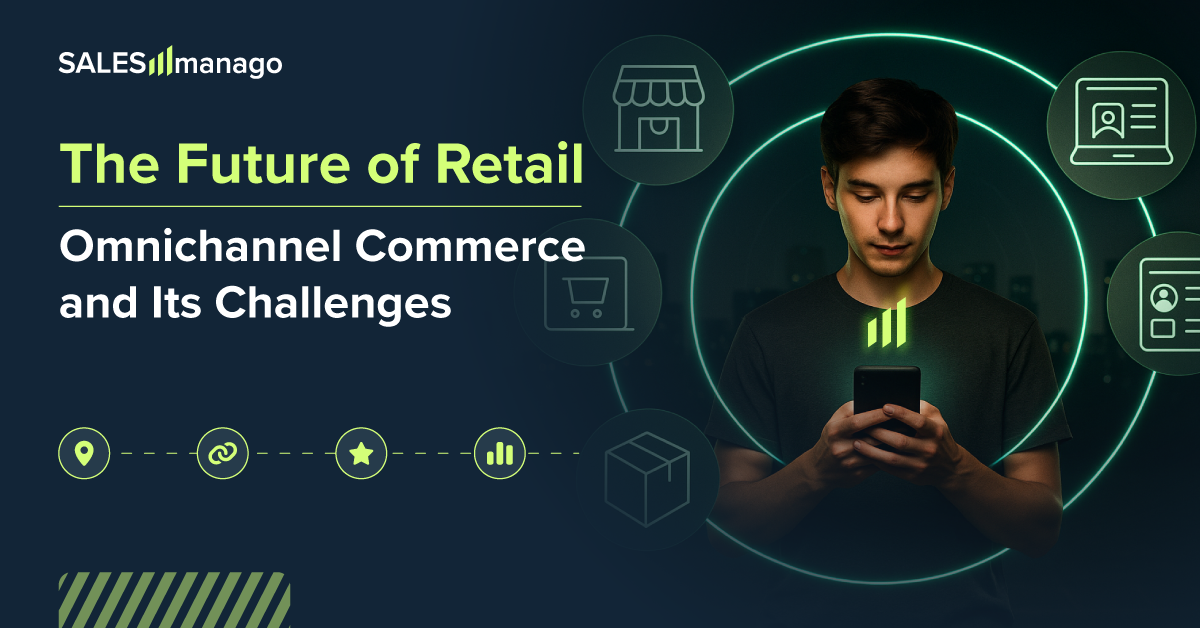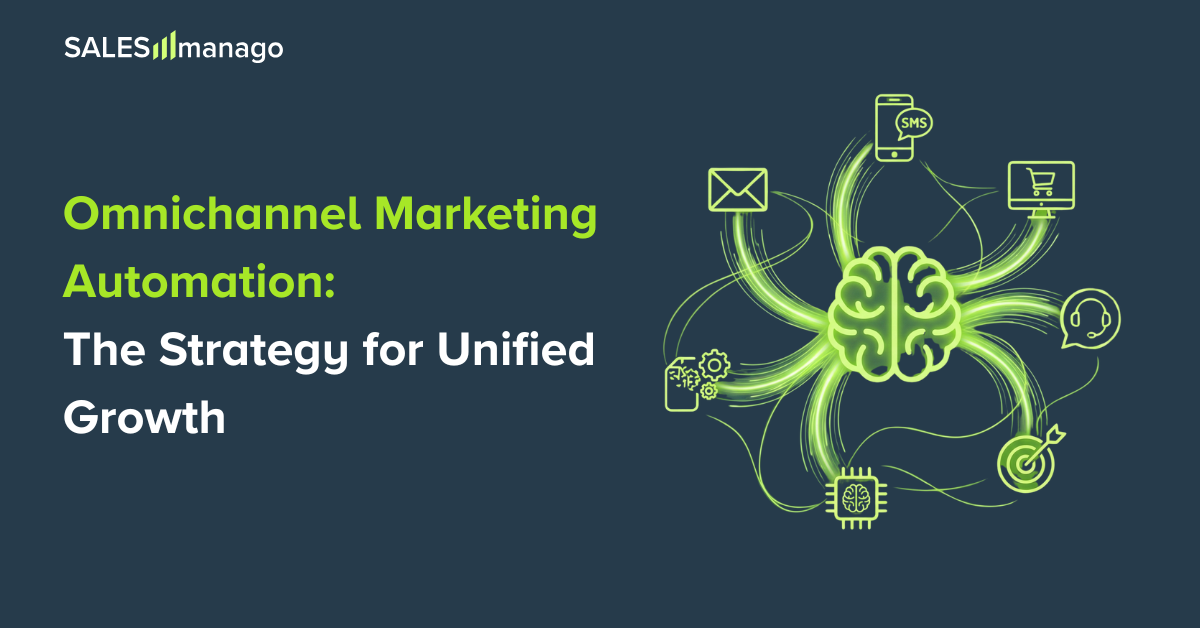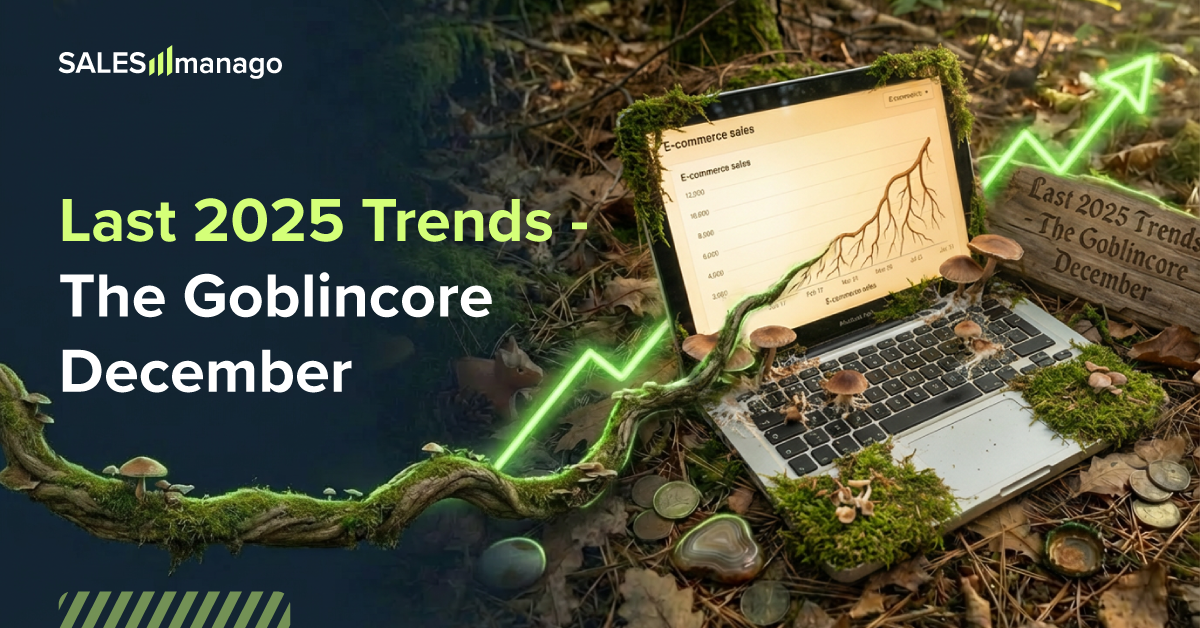
Expanding retail sales online, even by brands that have solidified their market position in physical shops, has practically forced new approaches to consumer engagement. Unlike traditional commerce or classic marketing, omnichannel commerce comes with an integrative vision that ensures the customer a unified experience across various physical and online channels.
A journey through the sales funnel that begins in the digital environment naturally continues in the physical shop, and physical experiences are complemented and rewarded by certain digital behaviours—installing the brand's app, signing up for the newsletter, following on social media, reviews etc.
Understanding Omnichannel Commerce
Think about the last time you shopped online. Perhaps you searched for a product on a laptop, checked the details later on your phone, and finally, ordered it from the shop's app or went directly to the shop to pick it up. This is exactly what Omnichannel Commerce means – a seamless, uninterrupted shopping experience, no matter the device used or the channel through which you interact with the brand.
In short, omnichannel is a strategy by which companies ensure that the customer experience is as simple, quick, and enjoyable as possible. It doesn't matter if a user is browsing the website, exploring products on social media, receiving offers by email, or visiting a physical shop—everything must be interconnected.
The Changing Retail Landscape
The retail industry is estimated to surpass the value of 100 billion dollars globally by 2026. The year 2025 represents a major shift for retailers and brands, marking the transition from traditional trade and shopper marketing methods to advanced omnichannel retail media strategies.
Adopting the omnichannel system in retail opens new possibilities for brands and retailers. Using their own data, audiences, and integrated media channels of retailers, campaigns can be planned and optimised to target consumers throughout the purchasing process. By integrating advanced solutions, the impact of campaigns can be measured in real time, at the store level and customer segment, ensuring transparent ROI and efficient budget allocation.
Retailers can identify seasonal peaks, such as increased sales for certain products depending on the season or special events, adapting their strategies to maximise impact. Additionally, analysing consumer data offers valuable insights into customer behaviour, such as the influence of payday on sales or the trends of uptrading and downtrading in different product categories.
Globally, the retail industry is estimated to reach a value of over 100 billion dollars by 2026, according to the Boston Consulting Group. This emerging field becomes increasingly important for retailers and brands, offering new growth opportunities through the use of data and advanced targeting technologies.
Omnichannel retail allows more precise targeting of consumers, combining online and offline environments to provide a unified and relevant experience. This strategic change transforms the way brands interact with their audience, focusing on efficiency, personalisation, and optimising advertising campaigns in real time.
Key Benefits of Omnichannel Commerce
Omnichannel commerce brings benefits for both consumers and brands. This strategy ensures a seamless experience across multiple platforms, improving interaction with customers and contributing to business growth.
A more enjoyable experience for customers
Customers can effortlessly interact with the brand and make purchases regardless of the platform they are on: website, mobile app, social media, or physical store. This means increased comfort and quick access to the desired products or services.
Increase in sales and profit
Customers can easily engage with the brand and complete purchases on any platform they are using whether it’s a website, a mobile app, social media, or a physical store. This results in greater convenience and fast access to the products or services they need.
Your brand is always where your customers are
You no longer have to wait for them to find you—you will be present on the platforms they use most often. Whether it's social media, email, or an online store, your products are always readily available.
Customer Loyalty
A well-executed omnichannel strategy transforms occasional shoppers into loyal customers. If the buying process is easy and enjoyable, they will definitely return and are likely to recommend the brand further.
Significant Competitive Advantage
By implementing an effective omnichannel strategy, your brand sets itself apart from the competition. Customers will choose to stay loyal to a brand that offers them an integrated and accessible experience across multiple channels. Thus, you not only attract more customers but also maintain a competitive edge in the market.
Real-world Examples of Successful Omnichannel Strategies
In the current retail environment, successful brands have adopted omnichannel marketing strategies to provide a seamless and personalized experience for their customers. These strategies integrate both online and offline channels, allowing customers to interact with brands in a way that is far more convenient and tailored to their individual needs. Here are a few examples of European brands that have successfully implemented these strategies:
John Lewis & Partners
John Lewis has mastered the art of merging online and offline experiences. Customers can shop both online and in physical stores seamlessly, with features such as "Click & Collect" for convenient in-store product pickup.
Their loyalty program, My John Lewis, integrates rewards and offers across multiple channels, personalizing experiences both online and in-store, which has helped to maintain strong customer loyalty.
Marks & Spencer (M&S)
M&S utilizes an omnichannel approach to deliver an integrated shopping experience. Customers can order online and pick up products in-store, or shop directly in the physical stores. Their loyalty program, "Sparks," connects online and in-store purchases, allowing customers to earn rewards and personalized offers regardless of the channel used.
They also focus on enhancing in-store experiences by integrating digital elements, such as product information and promotions available through mobile apps.
Tesco
Tesco's omnichannel strategy is based on the seamless integration of online grocery shopping, in-store experiences, and delivery services. The company allows customers to shop via their app or website and choose between home delivery or store pickup.
Their loyalty program, Clubcard, further enhances the omnichannel experience by offering personalized discounts and rewards based on both online and offline purchases, helping to build long-term relationships with customers.
Steps to Implement an Effective Omnichannel Strategy
To build an effective omnichannel strategy, it is essential to create a unified and consistent experience for customers, regardless of the channel they choose to use. With solid integration of various channels, you can build a brand identity that resonates consistently across all customer touchpoints. Here are some essential steps for implementing a successful omnichannel strategy:
1. Determine customer touchpoints
A crucial first step is to understand the touchpoints customers have with your brand. This involves conducting a detailed audit and putting yourself in the customer’s shoes to identify any frustrations or barriers they encounter during the purchasing process. What elements of the experience are dissonant? Once you have identified the key points, you can work on creating unique touchpoints, such as online shops on desktop, interactive email marketing campaigns, and mobile apps, which enhance the experience.
2. Bridge the gaps between channels
A fundamental element of omnichannel marketing is the fluidity and aesthetic consistency between the parts that form the customer's experience. Each touchpoint must be reliable and aligned, and the transitions between channels should be just as efficient.
For example, your Facebook account can be linked to your website through integrations that allow customers to purchase directly from the platform. Customers may choose to complete their purchases on desktop or visit the physical store, but they can avoid these additional steps and make an impulse purchase if they wish.
3. Focus on personalized services
Personalization is crucial in omnichannel marketing and today's business environment. Customers readily provide their information, aware that companies collect it, so they expect a personalized experience in return. They want the business to understand their pain points, challenges, needs, motivations, and priorities. Use the data collected to create a robust personalized experience that leaves a strong impression.
For example, you can provide your representatives with tablets to assist customers in-store. If a product is out of stock, it can be ordered online right in front of the customer. Your team will have immediate access to information to answer questions and clarify any doubts.
4. Analyse performance and feedback
A crucial step for the success of the omnichannel strategy is to constantly analyse its performance and collect feedback from customers. Monitor buying behaviours across all channels and use analytical tools to identify potential areas for improvement.
Customer feedback, obtained through surveys, reviews, or analysis of behaviour on the website and in stores, will help you understand what works and what does not, and will provide the necessary information to optimize their experience. Additionally, it will allow you to prevent potential discrepancies between channels and continuously improve their integration.
5. Adjust and optimize continuously
After analysing performance and obtaining the necessary feedback, it is essential to continuously adjust and optimize the omnichannel strategy. Each channel may have specific needs and behaviours, and staying flexible and prepared to modify approaches based on market changes and customer preferences is crucial.
For example, you can adjust marketing campaigns, technological integration, or in-store experiences to reflect new trends and improve customer satisfaction. Thus, you will maintain a coherent and relevant experience for consumers, which leads to their long-term loyalty.
Conclusion
Omnichannel commerce represents the future in retail, perfectly integrating online and offline experiences to offer consumers continuous and personalised interaction with brands. As purchasing behaviours diversify and technology evolves, retailers adopting an omnichannel strategy will gain a significant competitive advantage.
This model not only simplifies the purchasing process for customers but also allows brands to collect valuable data, optimise campaigns in real-time, and ensure a cohesive and loyalty-enhancing experience.
Thus, omnichannel commerce is no longer just a trend, but a necessity for the long-term success of any retail business that wants to remain relevant and connected with consumer needs.
Latest posts

Omnichannel Marketing Automation: The Strategy for Unified Growth
The modern eCommerce marketer is caught in a difficult paradox. You are expected to deliver a seamless, relevant experience for every single customer—true 1-to-1 personalisation—yet you are often armed with a fragmented stack of tools that treat your customers like rows in a spreadsheet.

Last 2025 Trends - The Goblincore December
If you have spent any time on social media recently, you might have encountered the term "Goblincore." It is an aesthetic and a mindset that rejects the polished, minimalist perfection of modern life in favour of the chaotic, the cozy, the earthy, and the comfortably "ugly." It is about burrowing into a pile of blankets, collecting shiny trinkets,...

#Growth Hack Series: Master Hyper-segmentation and Campaign Speed with AI Sidekick
As an email marketer, your job is a tough one: trying to send the right message, to the right person, at the perfect moment. And reaching this goal is as hard as catching unicorns - you may do everything right, prepare for every possible condition, polish your segments and emails, and still miss the target. Mostly, because unicorns are magical beasts so you will need...